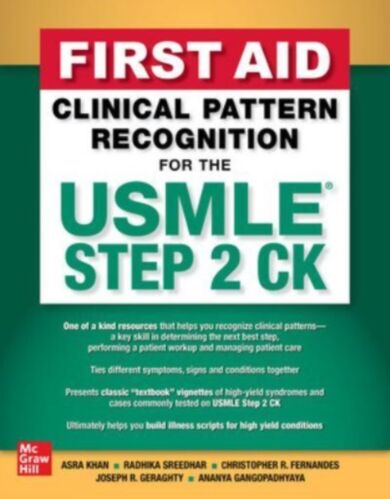First Aid Clinical Pattern Recognition for the USMLE Step 2 CK
Innbundet
Engelsk
- Format: Innbundet
- Antall sider: 1040
- Språk: Engelsk
- Forlag/Utgiver: SD Books
- EAN: 9781264285969
- Utgivelsesår: 2023
- Bidragsyter: Khan, Asra R.; Sreedhar, Radhika; Fernandes, Christopher R.; Geraghty, Joseph R.; Gangopadhyaya, Ananya
549,-
The most trusted name in USME review¿just ask any student!
First Aid Clinical Pattern Recognition for the USMLE Step 2 CK provides the information you need to tie clinical facts together in order to recognize patterns and build illness scripts for various high-yield conditions. This essential resource features classic textbook-style vignettes of syndromes and cases commonly tested on the USMLE 2 CK. You''ll learn how to determine the next best step, perform a patient workup, and effectively manage patient care. By presenting context that ties different symptoms, signs, and conditions together, the text encourages you to consider a differential diagnosis for a chief complain, explore how different conditions may be related to one another, and more.
¿ All key conditions began with a high-yield overview and then move into case vignettes for that particular disorder type
¿ Robust differential diagnosis sections provide targeted information o
First Aid Clinical Pattern Recognition for the USMLE Step 2 CK provides the information you need to tie clinical facts together in order to recognize patterns and build illness scripts for various high-yield conditions. This essential resource features classic textbook-style vignettes of syndromes and cases commonly tested on the USMLE 2 CK. You''ll learn how to determine the next best step, perform a patient workup, and effectively manage patient care. By presenting context that ties different symptoms, signs, and conditions together, the text encourages you to consider a differential diagnosis for a chief complain, explore how different conditions may be related to one another, and more.
¿ All key conditions began with a high-yield overview and then move into case vignettes for that particular disorder type
¿ Robust differential diagnosis sections provide targeted information o


